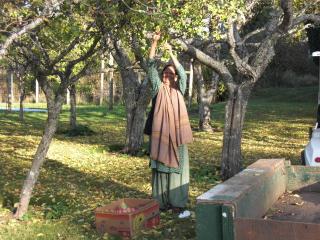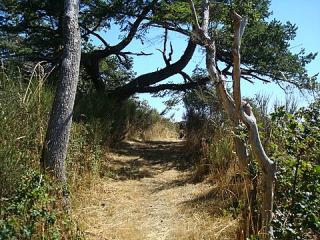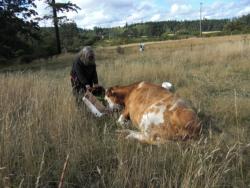Swanwick Star Issue No. 6 (2013)
This retreat was focused on the question, “Is it possible to live a meditative life?” Mark Lee, for many years Executive Director of the Krishnamurti Foundation of America in Ojai, California, and his wife Asha were the guest facilitators. Dr. Ashutosh Kalsi, who teaches at Simon Fraser University, came with them from Vancouver and contributed his passionate interest in dialogue and inquiry to the group. In all there were 18 participants in the retreat.
On the Friday evening, after a short introduction by Mark, Asha and Ashutosh each gave a short talk about dialogue and their intention for the weekend. This was followed by a demonstration by these three of a dialogue on the subject of “What is a meditative life?” The dialogue was then opened to the whole circle.
On Saturday morning a video was shown of Krishnamurti speaking on meditation and the importance of “putting our house in order”. A group dialogue followed until lunch and was picked up again in the afternoon. The discussion was quite intense and passionate at times and provoked some depth of questioning and looking. Before dinner Mark facilitated a text study session wherein passages from the booklet “Mind in Meditation” were read and discussed. A copy of this booklet had been given to every participant at the start of the retreat.
Saturday evening we watched a video of K in conversation with Allan Anderson, again exploring meditation. The group seemed to be spontaneously drawn into a period of silence after the video ended.
A talk given by K in Ojai was shown on Sunday morning, once more on the topic of meditation but this also included the necessity of right relationship, the issue of the self-image being hurt, and the possibility of it never being hurt. K then touched on a variety of related issues such as the psychological recording of hurts, ending problems as they arise, time and the timeless, space without a centre, space and silence, the unoccupied mind, and openness to the new. The question was asked by K, “Can thought come to an end?”.
The remainder of the morning was spent in group dialogue, mostly focused on the question of what is right action in a world that seems to be disintegrating or in disorder. Whether or not the world is in fact disintegrating or in a state of degradation was part of the discussion.
This was followed by a final dialogue in the afternoon. In closing, Mark asked the participants how they felt they had responded to the intent of the retreat, which was to investigate what is a meditative life, and if there were any suggestions for improving the retreat. There were a few suggestions but it seemed that most felt the weekend was very interesting and valuable, very much appreciated the facilitation of Mark and company, and were hoping the three guests would return again next year, which they all said they would be happy to do.
David Bruneau/ Ralph Tiller
Dr. Kumar teaches at Mt. St. Vincent’s Education Department in Halifax. He had recently given a presentation at the annual gathering of the Krishnamurti Foundation of America and was staying at Swanwick for a personal retreat. He has participated in numerous Krishnamurti dialogues at locales such as Brockwood Park in England, as well as using the dialogue format in his university courses. He kindly offered to meet with interested persons for a dialogue while in Victoria, so we met with him for a special dialogue in lieu of the normal Inquiry Sunday. Altogether 11 people gathered for a two hour session, very interested in experiencing Dr. Kumar’s approach to group dialogue.
Following brief self introductions by the participants, Dr. Kumar suggested we discuss questions that are the most significant to us in our self exploration. What is our central urgent question? One participant raised a, to her, burning question, namely what is meditation and the role of the meditator? Dr. Kumar then asked: Why do we meditate? In the ensuing dialogue Dr. Kumar was quite directive in maintaining a focus on the essentials of the inquiry and guided the group to consider what it is we are looking for and what are the obstructions.
He shared that his own most pressing question was why, once the ego has become quiet or non-active for perhaps a short time (or no-time) it always returns and takes a central position in our sense of ourselves. Many of the group agreed that this was also a real question for them and some discussion took place on the topic. Dr. Kumar suggested that a question such as this one can be asked from the thinking mind, in which case it has little power to transform, or from the totality of our being, which creates a disturbance in our lives which has creative potential to respond to the question in a profound way. The importance of intense awareness of the subtleties of the thinking process was emphasized and explored. The session ended with 5 minutes of silence.
Participants seemed to very much appreciate and enjoy the chance to share meditative inquiry with Dr. Kumar and it seems there is a good possibility he will return next year to hold a retreat at the centre.
The following day Dr. Kumar gave a presentation at the University of Victoria as part of ‘Congress 2013’ which was attended by Ralph. The topic was Brockwood Park School, a residential Krishnamurti school in England, where he had recently spent 3 months observing the way the school implements K’s approach to inquiry-based education. A 13 minute introductory video of the school was part of the presentation (see http://www.youtube.com/watch?v=vi9aaFNqpU8 ). For an earlier presentation by Dr. Kumar at Brockwood itself, with some of his observations about the school, see http://www.youtube.com/watch?v=qKPxp7FtpBU .
Ralph/David
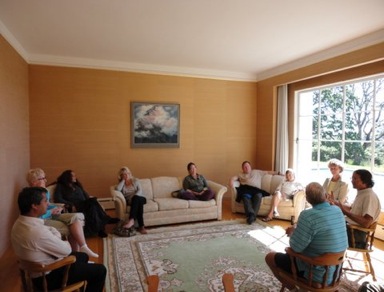

Dr. Ravi Ravindra, invited to facilitate a retreat at the Krishnamurti Educational Centre of Canada, had personal contact with Krishnamurti on numerous occasions. He also had a long and varied academic career with degrees in Physics, Philosophy, and Religious Studies and taught many years at Dalhousie University in Halifax.
On the Friday evening Dr. Ravindra gave a public talk and interactive dialogue in Victoria which was very well attended by 67 persons! The weekend retreat, attended by altogether 16 participants (including 6 overnighters and 7 commuters), was an exploration in greater depth of many of the ideas presented at the public talk. Each day there was a guided meditation, a talk by Dr. Ravindra, and time for group discussions of different kinds (exploring quotations of Krishnamurti, participants’ questions and observations, and so on). Also included were some exercises on looking and listening and a Krishnamurti DVD (Ojai 1982, 3rd public talk) was shown.
Dr. Ravindra had a number of stories to relate about his experiences with Krishnamurti and those around him, many of which showed aspects of K’s character and his ways of relating with others. He also presented certain ideas and viewpoints regarding K’s teachings and questions for the group to consider. Topics touched on included the importance of being aware of our deeper motives and what is driving our lives and spiritual search. Our motives are purified as we deepen in our understanding and self knowledge. Right action was discussed as freedom from the “me”: if understanding of the “actor” is right then every action is right. It was suggested that it is important to be aware also of our deep need for approval and fear of disapproval.
One of the points Dr. Ravindra shared was that in studying K we should not take his words too literally but must question and explore what they mean for us. If we take any one statement to be the absolute truth we will become confused when we later hear or read something which seems opposed or different. Dr. Ravindra suggested that such apparent contradictions can be helpful in requiring us to look for ourselves.
It seemed that everyone felt very fortunate to have been visited by Dr. Ravindra and to have shared this opportunity to meet together.
Ralph/David
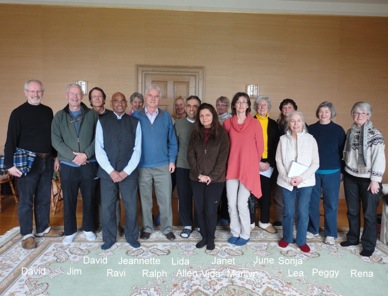
During Dr. Ravindra’s workshop, he suggested that the participants go out into nature and find an object to investigate like a tree or a flower. The object was to be examined in three different ways and the effects of such observation to be noted.
First of all, participants were to make a scientific-like report about a tree, for example, and put it down in writing. Just “objective” facts were to be noted. Then, after a break of a few minutes with perhaps a short walk, people were to return to the tree and observe it with the intention of writing a poem about it, and actually doing so. Once the poem was complete, there was to be another short break before coming back to the tree for the third time and observing it as if to hear what it was communicating or expressing to the observer. This was more like opening to it as a living being or expression of life and again writing down the results of such observation.
When everyone had finished the exercise participants met as a group and shared their experiences. It apparently proved to be most interesting for everyone involved and the results of the different ways of looking and listening were quite pronounced.
David
Unfortunately, I did not have the privilege of attending Dr. Ravindra’s retreat due to my Mother’s illness. However, when I received David’s most excellent description, I found “the tree exercise” so fascinating that I tried it.
Each time, I looked at a tree, a one-word impression came to mind – crooked; leaning.
Then, that impression changed into a one-word experience – light; energy; colour.
Finally, there was a sense of movement or vibration.
There was no “experiencer” in this experiment for “the experiencer” cannot exist without the word “I”. In fact, fresh impressions and experiences received in a meditative state of mind do not usually involve a “doer” for this reason.
Suddenly, I felt an affection and gratitude to this man I had not met who had devised such an insightful exercise!
…And, that was the first manifestation of “the thinker” during this whole experiment…
Why don’t you try the tree exercise and share your thoughts on our blog?
Chanda
“Death is such a shock for all of us” – Jagdis, Sister
“Chanda, I am so sorry….your Mom had a very special place in my heart….she will be missed”
– Bruce, Forester
“I am so very sorry. Your Mom was a wonderful person and I’ll truly miss her”
– Mary, Bank Manager
“I am so very sorry to hear of your Mom’s death. I felt close to her from the first time we met at Rishi Valley in 1980 and was very fond of her. Early on she said I was ‘a brother’, which I deeply appreciated. We had quite a few laughs together whenever we met, which was not often enough”
– Ray, KFT Trustee
“Chanda, we are deeply sad to learn of your dear mother’s passing. Please know you have our profound condolences. Your mother was a great woman–a great friend and so deeply serious about whatever she touched. Love to you and your family”
– Mark, KFA Trustee
“I was sorry to hear of your mother’s death. I only met her a couple of times but I know how much she did for all the K work in Canada and I guess she was instrumental in getting you to Brockwood (which we sure appreciate). I hope you are managing well and don’t forget it would be lovely to have you come and visit us sometime”
–Bill, Brockwood Co-Principal
“I’m so sorry to hear of your mom’s passing. She was always a person I enjoyed to be with and to talk with, during the times I had the chance to meet her, I have such good memories of her. I had thought when she came back home that she was going to get better and I was hoping to see her again. It was so nice when I talked with her the last time, and how she called me back right away to tell me ‘Luis can you say hello to Tsuki and give him a hug from me’…her presence will be always with me until my time comes too”
– Luis, Property Manager
“I only just read the bulletin from the KFA that mentioned the passing of your mother several days ago.
This news struck me both with surprise and a deep sense of sadness. Surprise, because while I was aware of Jackie’s failing health, I was unaware of any health issues with which your mother may have been grappling. Sadness, because Sarjit was an extraordinary woman, strong, intelligent, yet loving and compassionate, qualities which I quickly discerned when I first met her when I came out to teach at Wolf Lake school. These same qualities I noticed were also evident in you, and I hope they provide you with the fortitude to deal with the undeniable grief at your loss. I feel that loss, and send you my deepest condolences.
Thinking of your mom brings up many wonderful memories, such as listening to bhajans together in the cosy Rolls, while there was torrential rain pouring outside, on one of our Wolf Lake school field trips. Or seeing her shooing away those peacocks, both delightful and annoying, from her cottage at Swanwick”
– Hillary, Professor (and ex-principal of Wolf Lake School)
“Rosanna wrote to me and told me your mother passed away. I’m sorry I did not have a chance to see her during more recent times. She was a wonderful human being who affected my life in such a positive way. I think of her (and you) always with affection and the fondest of memories. I will never forget her”
–Krishna, Film Director (and ex-student at Wolf Lake School)
“I am at a loss for adequate words to express my sadness for you. Your mom was such a lovely lady. I often think about all the times I met her and will remember her always. Your mom touched so many people’s lives, and I know we are all enriched by it. I know heaven just received one of the most special angels. I am standing by your side in my prayers”
-Upi, Scientist
“Chanda, it is with great sadness that I now write to you.
I knew as we all did that your dear mother was soon to be leaving us however her departure, although expected, was nevertheless a shock, as incongruent as that may sound. Sarj was such a presence that the impression she gave at times was that she would always be there to ask the pointed and sometimes abrupt questions and then point the way…..albeit her way.
I will also remember Sarj for her caring for others, and I say that knowing she at times did not always show such favour to those close to her. She was much like my father in that regard, a product of another era (he was born in 1896) with a substantially different upbringing to mine. So we each must live our lives in our own way and hope we are appreciated and make a difference. Sarj appreciated how fortunate we are to be living here on this wonderful planet and throughout her life made a conscious effort, in both big and small ways, to make it a better place for all. We can all learn from her example, I know you have.
You must be well aware that you have many of your mother’s most admirable traits and for that you should be proud. It will be some of those traits that will help you through this difficult time”
–Charlie, Lawyer
“Dearest Chanda, Sarjit still lives in you…She had the most interesting life and loving family and her love for those things shone through her ever so brightly. I feel so privileged to have met her, your dad, and you and to have spend that time at the cafe with you all a few months ago. You all mean so much to me, as human beings…”
– Aleyona, KECC Facilitator
“I’m sorry to hear that she is gone. It’s a big blow to everybody. It must be very hard for you and other members of your family. I will miss her. It’s good that she enjoyed a few weeks at home after coming back from the hospital. I don’t know what else to say. Be strong…”
– Vance, KECC Director
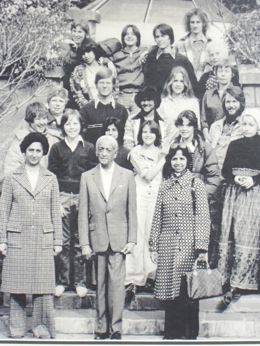
Krishnamurti’s visit to the centre in 1978, with Sarjit Siddoo on his left.
The ancient Hindus say that the soul of the departed hovers around the body for about three days desperately trying to re-enter it, but it is not able. The grief of those left behind can cause the soul further suffering and turmoil.
So, it is an interesting thing that on the morning of my mother’s passing, these words came into my mind and I resolved to say them on that day:
“We are here and we love you.
If you can stay, there is nothing we would like better,
But, if you have to go,
Then you must go, and
We will not hold you back”.
This was about an hour before she died and I think she must have heard me. It was February 22nd.
I only dreamt of her one night after that and so believe she understood her situation and her soul had its final release from this world.
Chanda, Daughter

On the morning of March 13th, I found myself pondering Allan’s words about Intelligence and how it cannot be perceived by thought.
A few days earlier, I had observed a pair of birds freeing themselves quite effortlessly from my verandah (see next entry). It reminded me of our discussion likening the bird that thinks it is trapped in the glass verandah (even though it is really free, because of the spaces in-between) to the human condition.
So, it is strange that the mantle of sadness settled upon my shoulders, once again, on the morning of March 14th only to learn of Allan’s passing. I had asked him to promise that if anything happened to either of us, we would each communicate with the other.
At the same time, I realized that the self-pity we feel is only for ourselves…
At my favourite spot in Vancouver which is sacred to the Native Americans, I started thinking about the Dr. David Bohm dialogue years at Swanwick and the seminars there with Professor Allan Anderson. I think we got really, really close to some communally shared spiritual meaning. It was so close to K’s prediction about “a new race of men emerging from the west coast of America”. Sarjit, of course, was a focal point right at the beginning of this movement. Then, it just seemed to slip through our fingers and we all went our own ways…but, then, again, maybe that was it…maybe something didhappen…
Now, how can I say that I have not lost two of my greatest teachers, when there is a gaping chasm?
Chanda, Friend and Student of the Spiritual
CS – I have written out our last discussion and, reading over it, it occurs to me that we have not dealt with the “fabric” of the human prison.
AA – Ah, yes! – the nature of the dragon’s pool.
CS – I think it has something to do with one’s relationship to past memories or “trace” – the trace that one senses after meeting a person, leaving a cemetery, visiting a particular part of the city or place.
I sense that it may be the crux of these chains, this imprisonment. Trace is like a layer of dirt that mars the beauty of everything. It is a desolation, the collective sorrow of mankind – I think it is human suffering.
AA – The difficulty of learning the freedom that is available to one, it takes a long time to discover.
There may be little flashes – insights – illuminations – but, then, the realization invariably recedes unless it is renewed each moment.
CS – …the obstacle to overcoming the idea of psychological limits.
That reminds me of something that happened this morning:
There was a little bird who flew into my glass-encased verandah and, suddenly, found that it was no longer free. It flew around and around in great distress but could find no way out of its prison. When it had exhausted itself, it just sat quietly in a corner.
Then, two other birds alighted beside it from a nearby tree.
Soon, they flew off again and the trapped little bird realized there was a gap between the glass sheets, so she followed them through.
AA – Yes, that is a marvellous description of it. Often, we do not take heed of the messengers sent to “guide” us along the way.
CS – As a child, I was always very sensitive to “trace” and had an intuition that there was a different way of living, without conflict.
AA – Because there is…but it is not an idea or concept.
CS – It is outside the realm of thinking.
AA – Yes!
Excerpt from The Bird in the Verandah (March 2001): personal impressions of dialogues with Professor Allan Anderson [AA] and printed with his permission.
In no way does the writer, Chanda Siddoo [CS] purport that these are verbatim discussions, but, passages recalled after telephone conversations in which she has attempted to pluck out their essence.





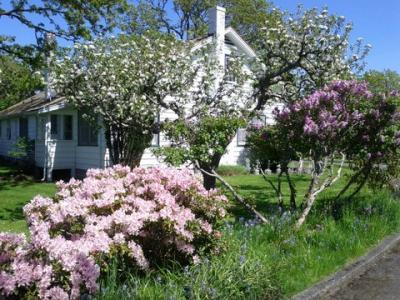


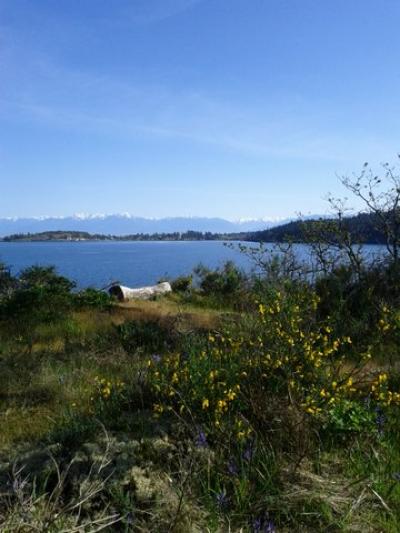
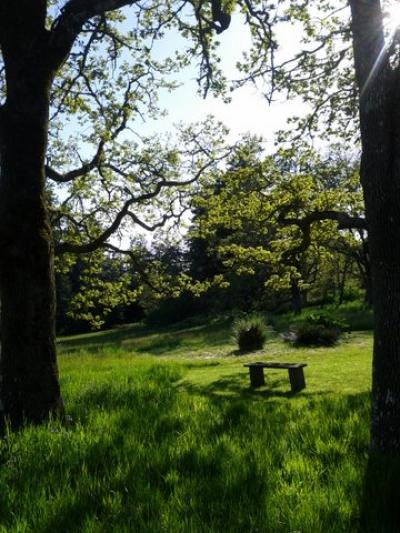
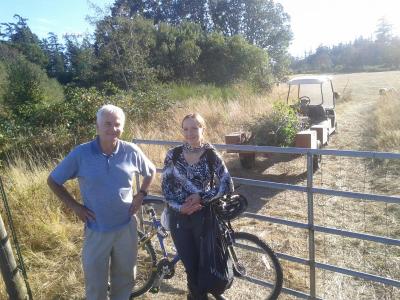
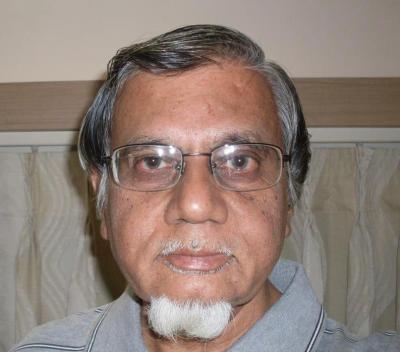
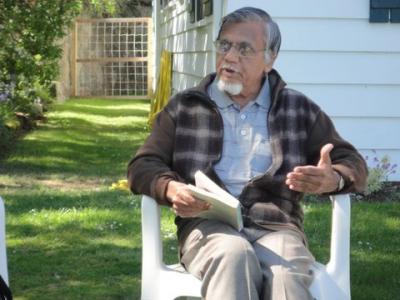
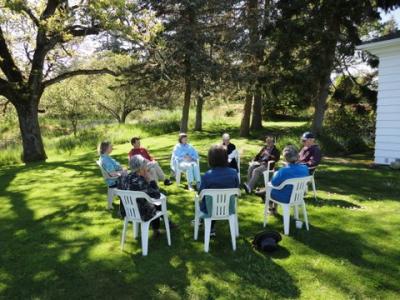

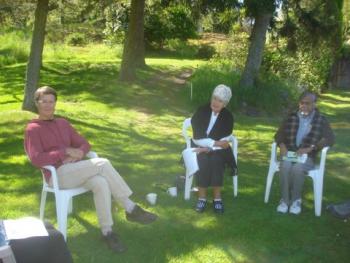
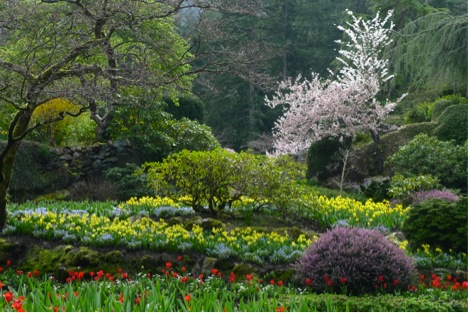

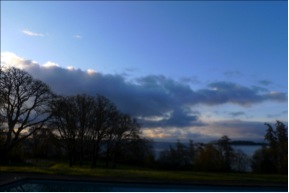
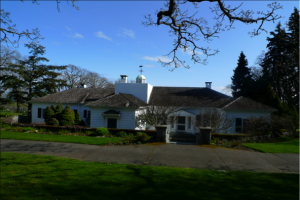 The open meadows that fringe the shores of the sea in Metchosin are the result of the Garry Oak groves that stand there, and the careful cultivation of the camas plant by the First Nations people. They cultivated the camas fields, which form part of the natural order of vegetation, a plant whose bulbs were an important part of their winter diet. The dark Douglas fir forest favoured the deeper soils a bit farther inland.
The open meadows that fringe the shores of the sea in Metchosin are the result of the Garry Oak groves that stand there, and the careful cultivation of the camas plant by the First Nations people. They cultivated the camas fields, which form part of the natural order of vegetation, a plant whose bulbs were an important part of their winter diet. The dark Douglas fir forest favoured the deeper soils a bit farther inland.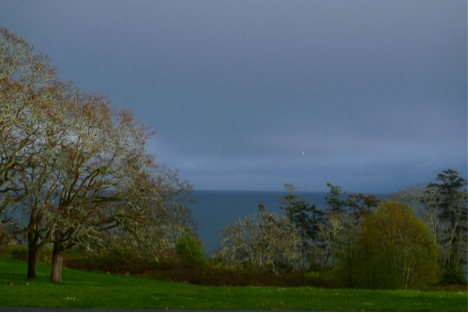
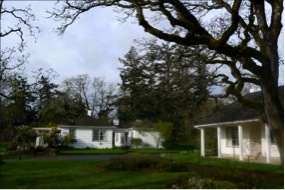


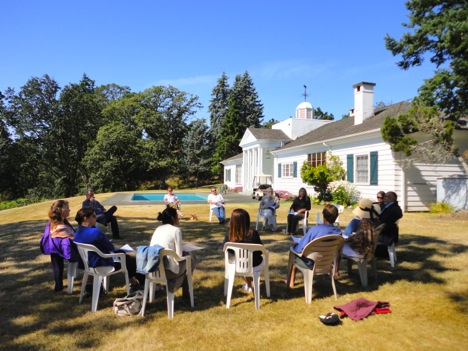
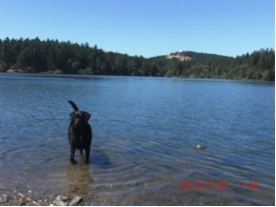
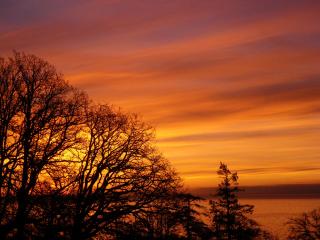
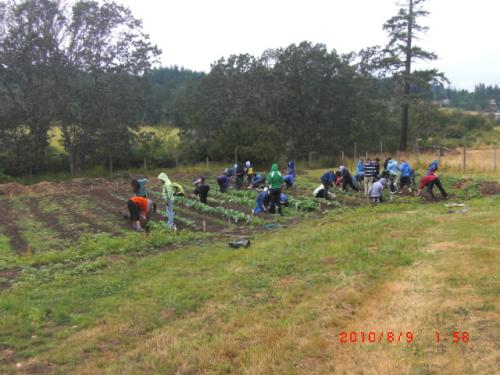
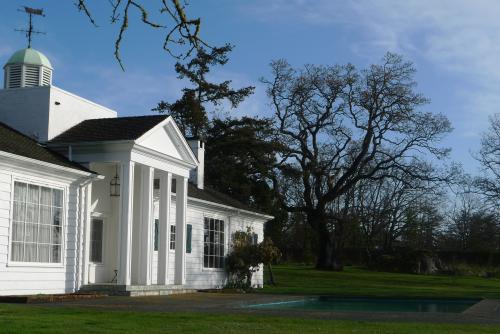
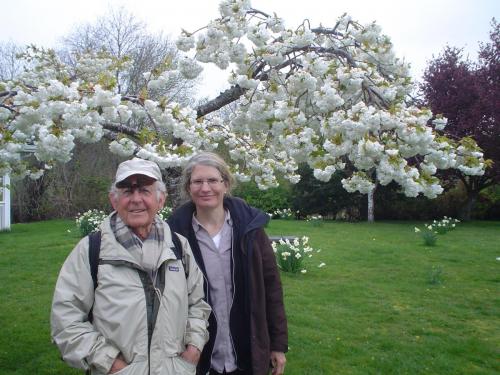
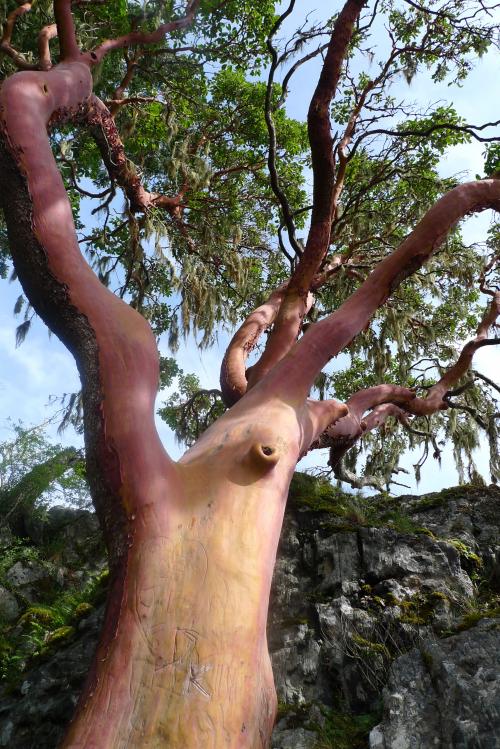
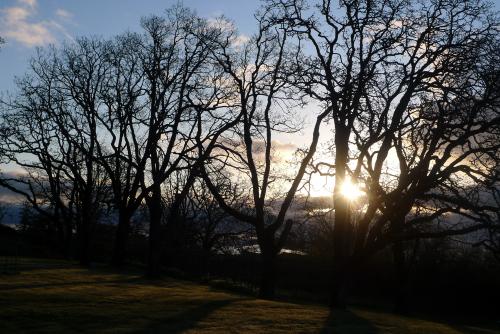
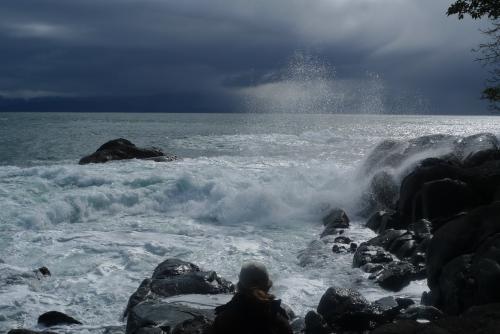

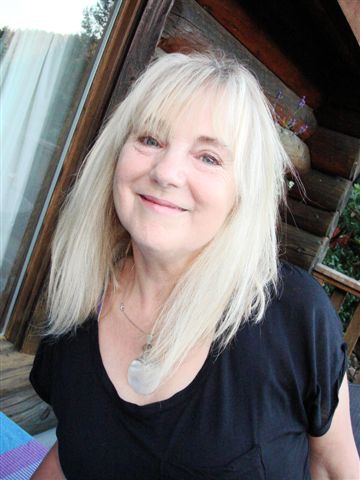

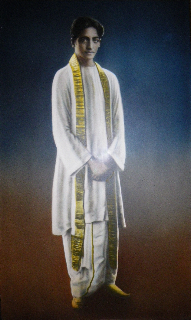
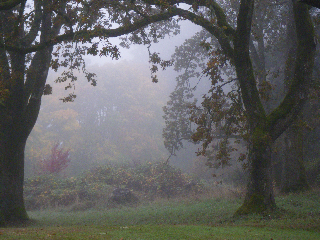
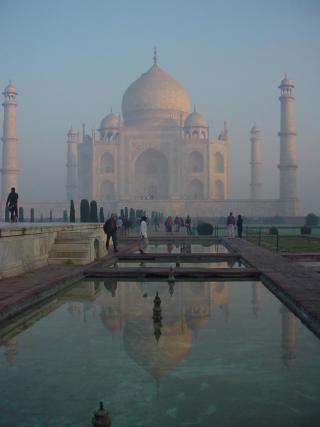
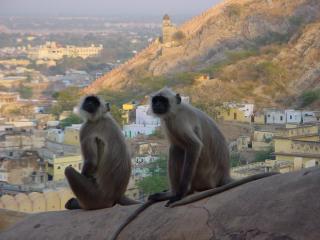
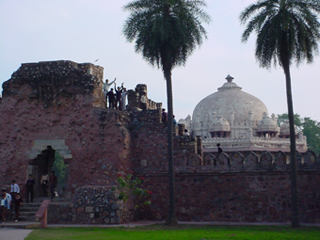
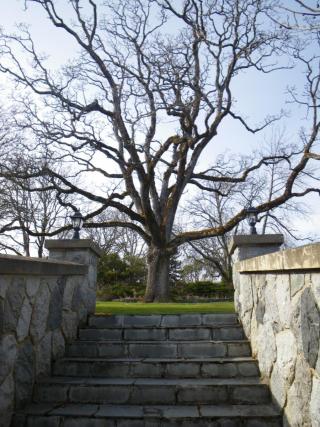
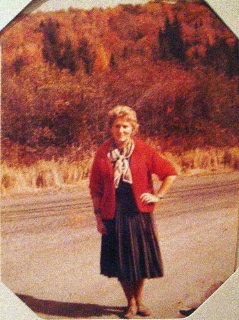 Berta was born Sep. 6, 1913 in the village of Neuhofen, Lower Austria. Her father died when she was still a child and she and her mother then moved to the nearby town of Waidhofen. There they came into contact with a residential community of local intellectuals and artisans keen on exploring new ways of living and thinking, and who were attracted to the ideals and ideas of the Theosophical Society that, at the time, had a large international following and had declared Krishnamurti (or K) to be the vehicle for the World Teacher.
Berta was born Sep. 6, 1913 in the village of Neuhofen, Lower Austria. Her father died when she was still a child and she and her mother then moved to the nearby town of Waidhofen. There they came into contact with a residential community of local intellectuals and artisans keen on exploring new ways of living and thinking, and who were attracted to the ideals and ideas of the Theosophical Society that, at the time, had a large international following and had declared Krishnamurti (or K) to be the vehicle for the World Teacher.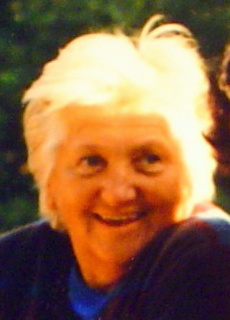 In later years she, with her brother Tony, would several times attend the Ommen camp talks in Holland where she, after the talks, would be invited to join K and others at mealtimes and social events. She also spent time in England to attend classes by Maria Montessori and completed her Montessori training. After WWII she attended K’s talks as often as she could, mainly in Saanen (Switzerland), but also in Brockwood (England) and Ojai (California).
In later years she, with her brother Tony, would several times attend the Ommen camp talks in Holland where she, after the talks, would be invited to join K and others at mealtimes and social events. She also spent time in England to attend classes by Maria Montessori and completed her Montessori training. After WWII she attended K’s talks as often as she could, mainly in Saanen (Switzerland), but also in Brockwood (England) and Ojai (California).
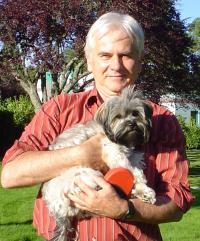 On returning to Montreal 4 years later, the Krishnamurti Educational Centre of Canada (KECC) was urgently looking for teachers and support staff for its newly established Wolf Lake School in Victoria. Accepting an offer to work there, I arrived in late 1979. I helped with tutoring and administration, but a main activity became organizing and maintaining a national outreach program for the KECC by organizing and hosting K video showings in Vancouver and Victoria and by supporting local groups across Canada. Eventually Hillary Rodrigues, a teacher and colleague, and I were asked by the owners to be in charge of the school in their absence until it was closed in 1981.
On returning to Montreal 4 years later, the Krishnamurti Educational Centre of Canada (KECC) was urgently looking for teachers and support staff for its newly established Wolf Lake School in Victoria. Accepting an offer to work there, I arrived in late 1979. I helped with tutoring and administration, but a main activity became organizing and maintaining a national outreach program for the KECC by organizing and hosting K video showings in Vancouver and Victoria and by supporting local groups across Canada. Eventually Hillary Rodrigues, a teacher and colleague, and I were asked by the owners to be in charge of the school in their absence until it was closed in 1981.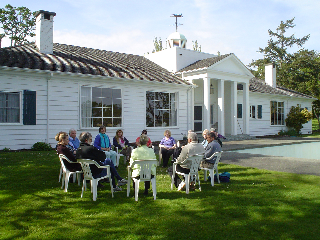

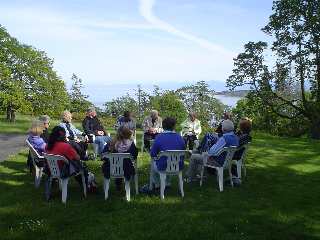
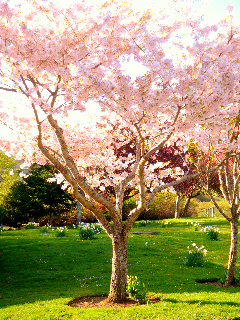
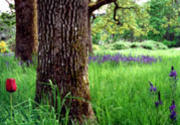

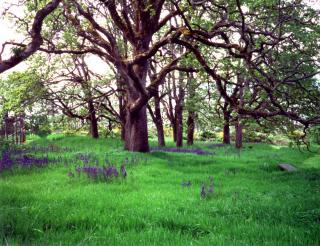
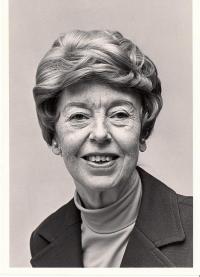 This is being written to honour an exceptional woman who lived a secluded life and yet had the foresight and immense generosity to leave her lifelong savings to a legacy which will allow others, like herself, to deeply explore the truth within each one of us. Without Gladys Clauson, it would not have been possible for the KECC (the Krishnamurti Educational Centre of Canada) to reopen its doors.
This is being written to honour an exceptional woman who lived a secluded life and yet had the foresight and immense generosity to leave her lifelong savings to a legacy which will allow others, like herself, to deeply explore the truth within each one of us. Without Gladys Clauson, it would not have been possible for the KECC (the Krishnamurti Educational Centre of Canada) to reopen its doors.
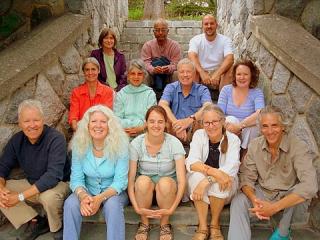
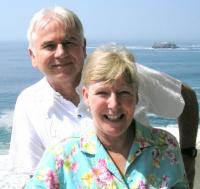 Three weekend retreats, hosted by Ralph and Madelaine Tiller, were held this year in May, August and October at the Centre, the first year after its reopening. These retreats introduced Krishnamurti and his teachings in the context of videotaped talks by contemporary teachers Eckhart Tolle and Adyashanti whose approach shares a similar focus on open enquiry into self and truth and a questioning of tradition, beliefs and spiritual authority.
Three weekend retreats, hosted by Ralph and Madelaine Tiller, were held this year in May, August and October at the Centre, the first year after its reopening. These retreats introduced Krishnamurti and his teachings in the context of videotaped talks by contemporary teachers Eckhart Tolle and Adyashanti whose approach shares a similar focus on open enquiry into self and truth and a questioning of tradition, beliefs and spiritual authority.